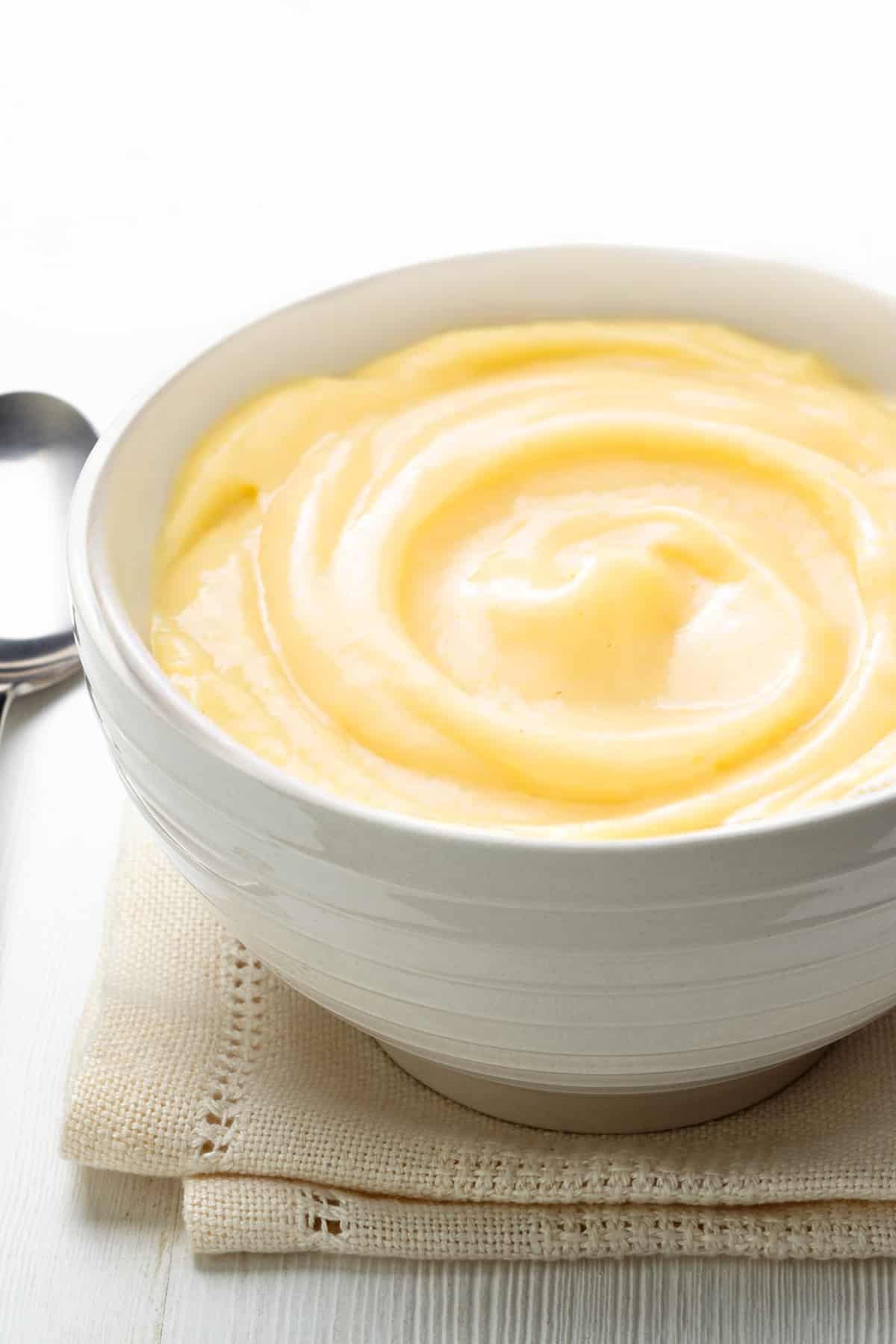Different Types Of Pastry Creams
There are many different types of cream used in baking. Each has their own unique properties and uses. Some are great for piping in choux buns, while others are best poured over hot pudding! Here is a breakdown of the different types of pastry creams.
Pasty Cream (Creme Patisserie)
Creme Anglais (Custard)
Creme anglais translates to “English cream”. It is the wonderful custard we all love to pour all over our apple crumbles while it’s steaming hot. Its consistency is slightly thickened but still pourable, unlike pastry cream which is thick and holds its shape. This is because no cornflour or flour is used, with only the egg yolk itself being the thickening agent. The egg, milk and sugar mixture is heated until it coats the back of a spoon, then the flavouring is added. It can used as a base for ice cream, bavarian cream, chocolate mousse, or poured straight onto a dessert!
Types Of Creams
Here is a list of the main different types of creams used in baking and patisserie. It includes their uses as well as their storage times. It’s a handy table that hopefully makes it easier as it can get confusing with all the different types!


How To Cool Creams Quickly
When making various creams, you may want to use it right away. Although, you must cool creams before using them otherwise they wont hold it’s shape. The best way to cool them down fast is to first line a baking tray with clingfilm. Then, take your hot cream and spread it in an even, thin layer over it. Cover with more clingfilm and set in the fridge. This step is important as it prevents a skin from forming on the surface. The thin layer of cream will cool a lot quicker than it would in a bowl!
How To Store Creams
Can You Freeze Creams?
Yes! Once put in an airtight container or zip lock bag, you can freeze creams for up to 1 month. Although, it is always preferable to make them fresh when possible.
How Are Creams Thickened?
So there you have it! A breakdown of all the different types of creams, their uses and how to store them. If you liked this post, check out my Coconut Raspberry Cake which goes amazingly well with custard!

